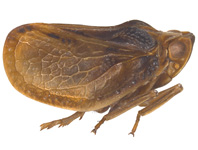Abstract
Cobbold (1858) established Diphyllobothrium Cobbold, 1858 with the description of Diphyllobothrium stemmacephalum Cobbold, 1858 from the common harbor porpoise, Phocoena phocoena (Linnaeus) (Phocoenidae), from the North Sea off Scotland. Diphyllobothrium stemmacephalum typically has been reported from a number of Phocoenidae and Delphinidae hosts from a variety of localities: common harbor porpoise from the northern Atlantic Ocean, Baltic Sea and Black sea (e.g. Cobbold, 1858; Delyamure 1955; Delyamure 1968; Delyamure 1971; Delyamure et al. 1985; Anderson, 1987); bottlenose dolphin, Tursiops truncatus (Montagu), from the Gulf of Mexico (Ward & Collins 1959), the Black sea (Delyamure et al. 1985); common harbor porpoise off Newfoundland (Brattey & Stenson 1995), the Black Sea (Krivokhizin & Birkun 1994 [see Yera et al. 2008]), off Denmark (Herreras et al. 1997); long-finned pilot whale, Globicephala melas [Traill], North Atlantic off Faroe Island (Balbuena & Raga 1993); Atlantic white-sided dolphin, Lagenorhynchus acutus [Gray], off Massachusetts (Olson & Caira 1999).
References
Anderson, K. (1987) A redescription of Diphyllobothrium stemmacephalum Cobbold, 1858 with comments on other marine species of Diphyllobothrium Cobbold, 1858. Journal of Natural History, 21, 411–427.
https://doi.org/10.1080/00222938700771091Balbuena, J.A. & Raga, J.A. (1993) Diphyllobothriids (Cestoda: Pseudophyllidea) from the long-finned pilot whale Globicephala melas (Traill, 1809) of the Faroe Island, with comments on the taxonomy of Diphyllobothrium Cobbold, 1858 species from cetaceans. Systematic Parasitology, 28, 117–126.
https://doi.org/10.1007/BF00009218Brattey, J. & Stenson, G. (1995) Helminth parasites of the alimentary tract of the harbor porpoise, Phocoena phocoena (L.) from Newfoundland. Journal of Helminthological Society of Washington, 62, 209–216.
Cobbold, T.S. (1858) Observations on Entozoa: with notices of several new species: including an account of two experiments in regard to the breeding of Taenia serrata and T. cucumerina. Transactions of the Linnean Society of London, 22, 155–172.
https://doi.org/10.1111/j.1096-3642.1856.tb00090.xCohn, E. (1912) Über Diphyllobothrium stemmacephalum Cobbold. Inaugural Dissertation der Königlichen Albertus Universität zu Königsberg i. Pr., Kaliningrad, 30 pp.
Delyamure, S.L. (1955) Helminth fauna of marine mammals (ecology and phylogeny). Akademiya Nauk SSSR, Moscow, 517 pp.
Delyamure, S.L. (1968) The occurrence of Diphyllobothrium stemmacephalum (Cobbold, 1858) in waters of the USSR. Parasitologiia, 4, 317–321.
Delyamure, S.L. (1971) Diphyllobothrium ponticum n. sp., a new diphyllobothriid from Tursiops truncatus. In: Sbornik Rabot po Gel’mintologii Posvyashchen 90-letiyu so dnya Rozhdeniya Akademika K.I. Skrjabina. Izdatel’stvo Kolos, Moscow, pp. 123–125.
Delyamure, S.L., Skrjabin, A.S. & Serdiukov, A.M. (1985) Diphyllobothrids-Cestodes of man, mammals and birds. In: Principles of Cestodology. Vol. 11. Nauka, Moscow, 200 pp.
Gibson, D. & Bray, R. (2017) Diphyllobothrium Cobbold, 1858. World Register of Marine Species. Available from: http://www.marinespecies.org/aphia.php?p=taxdetails&id=105012 (24 August 2017)
Hernández-Orts, J. S., Scholz, T., Brabec, J., Kuzmina, T. & Kuchta, R. (2015) High morphological plasticity and global geographical distribution of the Pacific broad tapeworm Adenocephalus pacificum (syn. Diphyllobothrium pacificum): Molecular and morphological survey. Acta Tropica, 149, 168–178.
https://doi.org/10.1016/j.actatropica.2015.05.017Herreras, M.V., Sølvi, E.K., Balbuena, J.A., Kinze, C.C. & Raga, J.A. (1997) Helminth parasites of the digestive tract of the harbor porpoise Phocoena phocoena in Danish waters: a comparative geographical analysis. Diseases of Aquatic Organisms, 28, 163–167.
https://doi.org/10.3354/dao028163Hsü, H.F. (1935) Contribution à l’étude des cestodes de Chine. Revue Suisse de Zoologie, 42, 477–570.
https://doi.org/10.5962/bhl.part.117935Krivokhizin, S. & Birkun, A. Jr. (1994) Some changes in the helminth fauna of Black Sea Dolphins. In: Evans, P.G.H. (Eds.), European Research on Crustaceans 8. Proceedings of the 8th Annual Conference of the European Crustacean Society, Lugano, 1994, pp. 238–239.
Stunkard, H.W. (1949) Diphyllobothrium stemmacephalum Cobbold, 1858 and D. latum (Linn., 1758). Journal of Parasitology, 35, 613–625.
https://doi.org/10.2307/3273642Olson, P.D. & Caira, J.N. (1999) Evolution of the major lineages of tapeworms (Platyhelminthes: Cestoda) inferred from 18S ribosomal DNA and elongation factor-1α. Journal of Parasitology, 85, 1134–1159.
https://doi.org/10.2307/3285679Ward, J.W. & Collins, R.A. (1959) The occurrence of Diphyllobothrium stemmacephalum Cobbold, 1858, from the dolphin, Tursiops truncatus, of the Biloxi, Mississippi, Bay. Journal of Parasitology, Programs and abstracts of the 34th Annual Meeting, American Society of Parasitology, 45, 40.
Yamasaki, H., Kumzawa, H., Sekikawa, Y., Oda, R., Hongo, I., Tsuchida, T., Saito, N., Morishima, Y & Sugiyama, H. (2016) First confirmed case of Diphyllobothrium stemmacephalum infection and molecular verification of the synonymy of Diphyllobothrium yonagoense with D. stemmacephalum (Cestoda: Diphyllobothriidea). Parasitology International, 65, 412–421.
https://doi.org/10.1016/j.parint.2016.06.003Yamasaki, H., Izumiyama, S. & Nozaki, T. (2017) Complete sequence and characterization of the mitochondrial genome of Diphyllobothrium stemmacephalum, the type species for the genus Diphyllobothrium (Cestoda: Diphyllobothriidae), using next generation sequencing. Parasitology International, 66, 573–578.
https://doi.org/10.1016/j.parint.2017.06.005Yera, H., Nicoulaud, J. & Dupouy-Camet, J. (2008) Use of nuclear and mitochondrial DNA PCR and sequencing for molecular identification of Diphyllobothrium isolates potentially infective for humans. Parasite, 15, 402–407.
https://doi.org/10.1051/parasite/2008153402

